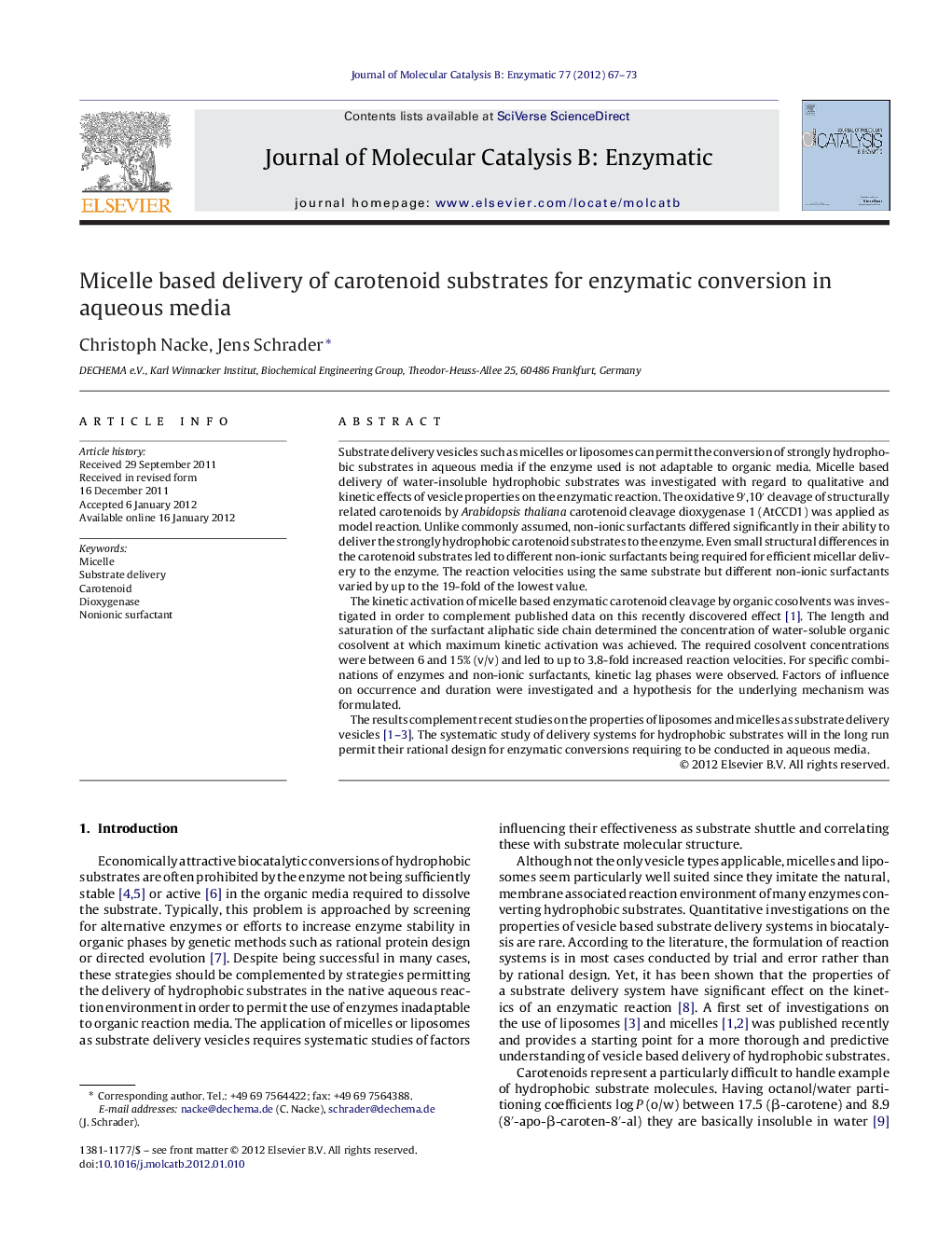| کد مقاله | کد نشریه | سال انتشار | مقاله انگلیسی | نسخه تمام متن |
|---|---|---|---|---|
| 70251 | 48818 | 2012 | 7 صفحه PDF | دانلود رایگان |

Substrate delivery vesicles such as micelles or liposomes can permit the conversion of strongly hydrophobic substrates in aqueous media if the enzyme used is not adaptable to organic media. Micelle based delivery of water-insoluble hydrophobic substrates was investigated with regard to qualitative and kinetic effects of vesicle properties on the enzymatic reaction. The oxidative 9′,10′ cleavage of structurally related carotenoids by Arabidopsis thaliana carotenoid cleavage dioxygenase 1 (AtCCD1) was applied as model reaction. Unlike commonly assumed, non-ionic surfactants differed significantly in their ability to deliver the strongly hydrophobic carotenoid substrates to the enzyme. Even small structural differences in the carotenoid substrates led to different non-ionic surfactants being required for efficient micellar delivery to the enzyme. The reaction velocities using the same substrate but different non-ionic surfactants varied by up to the 19-fold of the lowest value.The kinetic activation of micelle based enzymatic carotenoid cleavage by organic cosolvents was investigated in order to complement published data on this recently discovered effect [1]. The length and saturation of the surfactant aliphatic side chain determined the concentration of water-soluble organic cosolvent at which maximum kinetic activation was achieved. The required cosolvent concentrations were between 6 and 15% (v/v) and led to up to 3.8-fold increased reaction velocities. For specific combinations of enzymes and non-ionic surfactants, kinetic lag phases were observed. Factors of influence on occurrence and duration were investigated and a hypothesis for the underlying mechanism was formulated.The results complement recent studies on the properties of liposomes and micelles as substrate delivery vesicles [1], [2] and [3]. The systematic study of delivery systems for hydrophobic substrates will in the long run permit their rational design for enzymatic conversions requiring to be conducted in aqueous media.
Figure optionsDownload as PowerPoint slideHighlights
► Structurally related substrates require individual nonionic surfactants for delivery.
► Surfactant structure determines cosolvent concentration for maximum kinetic activation.
► Lag phases are specific to AtCCD1 and not inherent in micellar substrate delivery.
► Lag phase length is linearly correlated with the system's cosolvent concentration.
► Lag phase length is dependent on the pH of the reaction solution.
Journal: Journal of Molecular Catalysis B: Enzymatic - Volume 77, May 2012, Pages 67–73